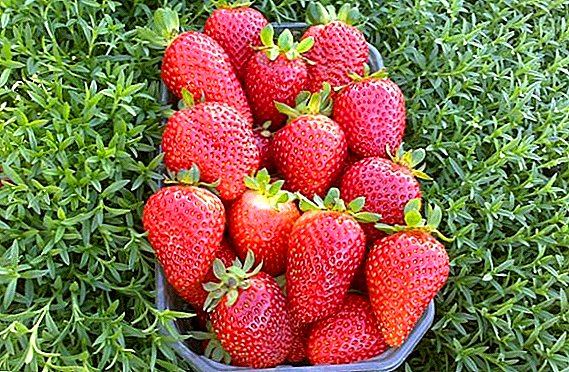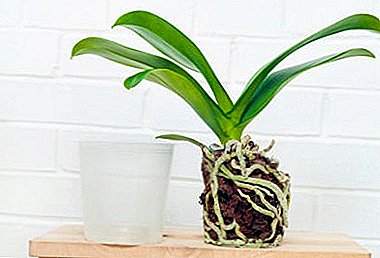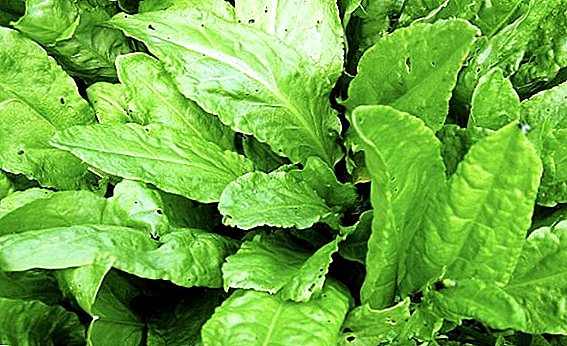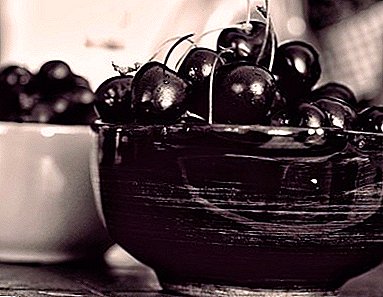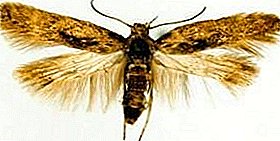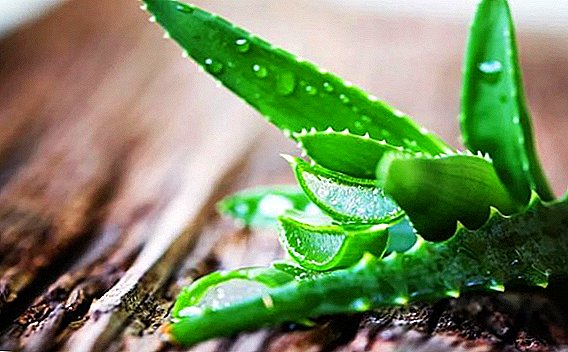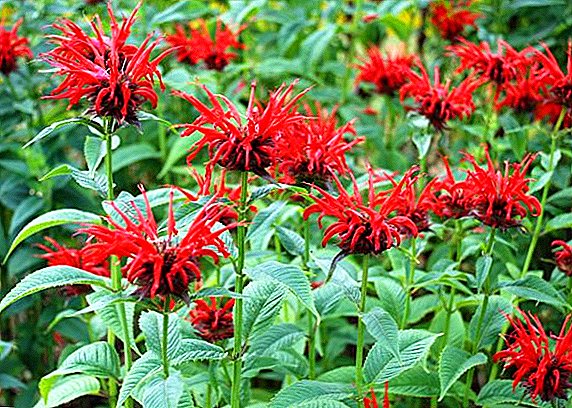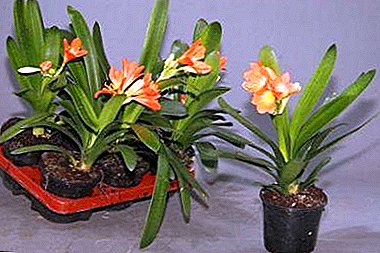
Clivia is a terrific inhabitant of many window-sills, looks very much like a daylily or a small lily. However, it belongs to the Amaryllis family and is a relative of such plants as Amaryllis, Hippeastrum and Nerina.
Delightful bell-shaped flowers, gathered in an umbrella, can please the owner with their views for several months. Clivia has long been the favorite of many flower growers.
In our article we will consider in detail the features of the cultivation and reproduction of this lovely flower. You can also watch a useful video on this topic.
How does a flower breed?
The most important for reproduction of Clivia difference from other plants of this family is that the underground part of the plant is represented not by the bulbs, like in other Amaryllis plants, but by a fleshy rhizome with adventitious roots. So, and methods of reproduction will be slightly different. Vegetative propagation methods are used mainly for cluvi, that is, parts of the rhizome and processes, and seed production. Consider each of them in more detail.
How to plant shoots and parts of rhizome?
The most commonly used breeding shoots, the so-called kids, because it is less time-consuming and relatively fast way. The disadvantages of the method include the fact that it is impossible to propagate young plants in this way, that is, the shoots themselves must be present. Swan kids must have at least 4 sheets.
Material selection
During the transplanting period, shoots with a sharp knife are separated from the mother plant with a part of the rhizome. All sections should be treated with charcoal, since Clivia's roots are prone to decay, and coal has a drying effect. Handle the young shoots with extreme care and avoid any damage, as the roots of the plant are very fragile.
Important: A flowering plant is not replanted or propagated. Transplantation and reproduction are carried out after the bloom of Clivia, in a dormant period.
Requirements for dishes and soil
 For young shoots use pots with a diameter of about 7 cm. It is possible to plant several children in one bowl.
For young shoots use pots with a diameter of about 7 cm. It is possible to plant several children in one bowl.
As a soil, you can choose a mixture of leaf soil and sand, a mixture of sand and peat, or clean wet sand. It is very important that the soil is not moisture-consuming, as clivia sharply reacts to the increased humidity of the substrate in which it is grown.
Also, there should be a drainage layer at the bottom of the pot so that the excess water does not lead to rotting of the roots and death of the plant. For drainage, you can use pieces of broken brick, pebbles, expanded clay.
The process of transplanting at home
An adult maternal plant is transplanted every 1-3 years, depending on the age of the plant.. The pot should be 3-5 cm more than the previous one. Soil for Clivia requires nutritious, for example, a mixture of clay-sod and leaf land, sometimes used soil for orchids.
The plant is transplanted by simple transshipment, but if there is a need for separation of the children, then the roots are very carefully straightened and washed from the old soil. When planting in a new pot, you need to ensure that the root neck is above the ground level to prevent rotting.
Read more about how to transplant the clienia at home.
We recommend watching the clivia transplant video:
Rooting of young plants
After planting, removed shoots do not water for 3-4 days, then gently resume moderate watering.. Young plants will bloom only after 2-3 years, but it is important not to create a rest period for the plants so that they continue to grow green mass and fill the space of the pot with roots (if your clivia does not bloom, you can read this article). Then the bloom will be more lush.
This can be achieved by systematic, but not too abundant watering and fertilizing. The method is considered optimal, as it requires much less time and effort, and the daughter plants will start to delight much earlier with flowering.
We recommend to watch the video about the rooting of clivia babies:
The division of the underground part of the trunk
Reproduction is rarely used by parts of the rhizome. Planting material is also obtained during transplantation. It is important to pay attention to the bud in the cut piece of rhizome, from which the shoot will develop. All cuts, as in the previous case, should be treated with charcoal.
Pieces of rhizomes gently placed in a mixture of sand with peat and limit watering for 2 days. Then watering gradually return. Flowering plant, obtained in this way, will begin at 3-4 year of life.
Seed breeding
The following method is more suitable for ideological people who are in love with floriculture. It is less efficient and more laborious, but also more interesting. It becomes especially interesting if there are already several Kliyovi of different colors at home. In this case, you can try to get a hybrid of these two plants and feel like a real breeder.
Training
 Of course, the seeds can be simply bought at the store, but then they will require special preparation for planting. It involves soaking the seeds before planting in the ground.
Of course, the seeds can be simply bought at the store, but then they will require special preparation for planting. It involves soaking the seeds before planting in the ground.
But the seeds obtained from the mother plant, do not require soaking, and getting them much more entertaining. During flowering, Klivia is cross-pollinated, possibly as the pollination of different flowers of the same plant, as well as the pollination of two different Clevias. Readiness for pollination is determined by the flower itself.
When a small drop appears on the stigma of the pistil, and the stamens begin to crumble, you can begin pollination. To do this, gently hold the stamen with a damp cotton swab or toothpick to keep some of the pollen on the instrument, and why transfer it to the top of the pistil.
If pollination was successful, the flower will start to wither, and at its base a green ovary will form.. It is in the future and forms the fruit. On one plant there can be several fruits at the same time that will not hinder the development of each other, but may spoil its appearance for some time. In time, the Clivia berry will turn red and become soft, which will speak of its maturity. But do not rush them to tear before landing. Seeds are recommended to be planted immediately from the fruit, so they do not have time to dry.
Sowing
Seeds are planted in a container with a nutrient medium, as a rule, a mixture of sand, peat and sod. Strictly observed that between the seeds was 2 cm, and the planting depth is no more than 1-1.5 cm. If the seeds are still dried, then they are kept for about a week in a warm place in a damp cloth or gauze before planting into the ground. After 4-6 weeks the first shoots will appear, in six months the plant can grow up to six leaves. With the advent of the first leaves, seedlings can be planted in separate containers. In the first year they are transplanted twice, then once a year, increasing the diameter of the pot by 2-3 cm.
The first three years of Clivia are not satisfied with the rest period, allowing the growth of roots and leaves.. Young seed plants will bloom only for 4-5 years of life. Clivia is a poisonous plant, it is necessary that children and animals do not have access to the plant in order to avoid poisoning. After all manipulations with the plant, hands and tools should be thoroughly washed.
The choice of the method of selection
The most commonly used vegetative method. It does not require special conditions, a long wait, and can be part of an annual transplant. Young shoots, which are deposited, are already sufficiently developed and start blooming much earlier. But sometimes adult large-sized specimens can not be transplanted. Or the plant may simply not give new shoots. Then you can resort to the second method.
Seed method is rarely used due to low efficiency, but allows you to propagate a plant that is difficult to transplant, and also opens up new horizons regarding selection on the windowsill. It is used mainly in the cold season.
No matter how interesting this method is, it can be used far from always. It should be used if the plant is over 8 years old, it is healthy and gets enough nutrition. A large number of restrictions is justified by the fact that fruiting greatly depletes the plant.
- Types of clivia and caring for plants.
- How to care for cleavia at home?
Conclusion
Clivia is a very unusual plant.. It is difficult to resist the temptation to get a whole field of splendor through fairly simple breeding. In this case, it does not matter what method was chosen for this. Here the result is much more important.



